(photo by Markus Hagenlocher)
One of the most well-known customs of Rosh Hashanah is the dipping of apple pieces in honey but what is its origin?
In the time of King David, we know he had a “cake made in a pan and a sweet cake” (II Samuel 6: 15, 19) given to everyone. Hosea 3:1 identifies the “sweet cake” as a raisin cake.
The Torah also describes Israel as eretz zvat chalav u’dvash, the land flowing with milk and honey, although the honey was more than likely date honey, a custom retained by many Sephardi Jews to this day.
While honey may have been used in King David’s cake, the honey of ancient Eretz Yisrael was made from dates, grapes, figs or raisins because there were no domestic bees in the land. At that time, only the Syrian bees were there and, to extract honey from their combs, it had to be smoked. Still, honey was of importance in biblical times, as there was no sugar then.
During the Roman period, Italian bees were introduced to the Middle East, and bee honey became more common. Today, Israel has roughly 500 beekeepers who have some 90,000 beehives, which produce more than 3,500 tons of honey annually. Kibbutz Yad Mordechai is the largest producer of honey – 10,000 bottles a day.
Among Ashkenazi Jews, challah is dipped in honey on Rosh Hashanah, instead of having the usual salt sprinkled on it. The blessing over the apple is, “May it be Your will to renew for us a good and sweet year,” before it is dipped in honey.
Dipping the apple in honey on Rosh Hashanah is said to symbolize the desire for a sweet new year. Why an apple? In Bereishit, Isaac compares the fragrance of his son, Jacob (who he thinks is his son Esau), to a field, and Rashi says it is sadeh shel tapuchim, a field of apple trees.
Scholars tell us that mystical powers were ascribed to the apple, and people believed it provided good health and personal well-being.
Some attribute the using of an apple at Rosh Hashanah to the translation of the story of Adam and Eve and the forbidden fruit, which caused the expulsion from paradise. The Garden of Eden is also called Chakal Tapuchim, “Garden (or field) of Apple Trees.”
According to Gil Marks (z”l) in Encyclopedia of Jewish Food, “the first recorded association of apples with Rosh Hashanah was in Machzor Vitry, a siddur compiled around 1100, which included this explanation: ‘The residents of France have the custom to eat on Rosh Hashanah red apples….’ Future generations of Ashkenazim adopted the French custom … leading to the most popular and widespread Ashkenazi Rosh Hashanah tradition.”
Rabbi Jacob ben Asher, born around 1269, who fled with his family to Spain in 1303, was the first to mention the custom of apples dipped in honey in his legal compendium Arbah Turim, circa 1310, citing it as a German tradition.
Rabbi Alexander Susslein of Frankfurt, Germany, a 14th-century rabbinic authority, revealed it had become a widespread practice in Germany.
A few years ago, an article revealed that the average Israeli eats 125 apples and 750 grams of honey a year, mostly around the High Holy Days. Israel is very self-sufficient with regard to apples, with around 9,900 acres cultivated yearly, grown in the north, the Galilee hills and the Golan Heights. The most popular types of apples grown are Golden Delicious, Starking, Granny Smith, Jonathan, Gala and Pink Lady.
Honey in Hebrew, dvash, has the same numerical value as the words Av Harachamim, Father of Mercy. We hope that G-d will be merciful on Rosh Hashanah as He judges us for our year’s deeds.
Moroccans dip apples in honey and serve cooked quince, which is an apple-like fruit, symbolizing a sweet future. Other Moroccans dip dates in sesame and anise seeds and powdered sugar in addition to dipping apples in honey. Among some Jews from Egypt, a sweet jelly made of gourds or coconut is used to ensure a sweet year and apples are dipped in sugar water instead of in honey.
Honey is also used by Jews around the world not only for dipping apples but in desserts. Some believe in the phrase, “go your way, eat the fat, drink the sweet,” the sweet referring to apples and honey. Here are some recipes using honey for your Rosh Hashanah eating.
TISHPISHTI: MIDDLE EASTERN HONEY-NUT CAKE
Honey syrup:
1 1/2 cups honey
2/3 cup water
1/3 cup sugar
1/4 cup lemon juice
Cake:
2 cups finely ground almonds, hazelnuts, pistachios or walnuts
1 cup cake meal
2 tsp orange juice
1 tsp ground cinnamon
1/2 tsp allspice or ground cloves
6 eggs
1 cup sugar
1/2 cup vegetable oil
1 tbsp grated orange or lemon zest
- Stir honey, water, sugar and lemon juice in a saucepan over low heat until the sugar dissolves, about five minutes. Increase heat to medium, bring to a boil and boil for one minute. Let cool.
- Preheat oven to 350°F. Grease a 13-by-nine-inch baking pan.
- Combine nuts, cake meal, cinnamon and cloves in a mixing bowl.
- In another bowl, beat egg yolks with sugar. Add to nut mixture with orange juice. Add oil and orange or lemon zest.
- In a third bowl, beat egg whites until stiff but not dry. Fold into batter. Pour batter into baking pan and bake for 45 minutes. Cool.
- Cut cake into one- to two-inch squares or diamonds. Drizzle cooled syrup over the warm cake. Serve at warm or room temperature.
MY GRANDMA SADE’S TEIGLACH
Though my grandmother was born in New Jersey, her mother came to the United States as a young girl from Russia, so she probably learned this dish from her mother. Teiglach means “little dough pieces,” and it was originally for family celebrations and various holidays. Today, it is made primarily for Rosh Hashanah as a symbol for a sweet new year. According to my favourite reference book for any food, Marks’ Encyclopedia of Jewish Food, Teiglach was brought to the United States by Eastern Europeans in the early 1900s, and nuts were not part of the recipe in the old country.
2 1/2 cups flour
1 tsp baking powder
4 tbsp oil
4 eggs
1/8 tsp salt
3/4 cup brown sugar
1 1/3 cups honey
1 tsp ground ginger
1/2 tsp ground nutmeg
1 cup finely chopped pecans
- In a mixing bowl, combine flour, baking powder, oil, eggs and salt. Stir until dough is formed.
- In a saucepan, boil sugar, honey, ginger and nutmeg for 15 minutes.
- Wet a board with cold water.
- Pinch pieces of dough and drop them into the boiling honey mixture. Cook until very thick. Add nuts and stir. Pour honeyed pieces onto the wet board and cool slightly.
- With wet hands, shape dough into two-inch balls or squares. Let cool. Store in an airtight container.
Sybil Kaplan is a journalist, lecturer, book reviewer and food writer in Jerusalem. She created and leads the weekly English-language Shuk Walks in Machane Yehuda, she has compiled and edited nine kosher cookbooks, and is the author of Witness to History: Ten Years as a Woman Journalist in Israel.

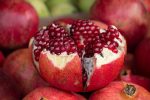

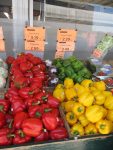
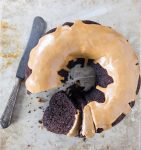
 Perfect for Pesach features more than 125 recipes, with mouth-watering photography by kosher blogger and cookbook author Miriam Pascal.
Perfect for Pesach features more than 125 recipes, with mouth-watering photography by kosher blogger and cookbook author Miriam Pascal.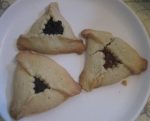
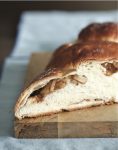
 Daykin published her first cookbook in 2013, Butter Baked Goods: Nostalgic Recipes from a Little Neighborhood Bakery, and her second in 2015, Butter Celebrates! A Year of Sweet Recipes to Share with Family and Friends, both via Appetite by Random House. Just last month, the U.S. edition came out from Knopf, with the subtitle “Delicious Recipes for Special Occasions,” and this reviewer received a copy.
Daykin published her first cookbook in 2013, Butter Baked Goods: Nostalgic Recipes from a Little Neighborhood Bakery, and her second in 2015, Butter Celebrates! A Year of Sweet Recipes to Share with Family and Friends, both via Appetite by Random House. Just last month, the U.S. edition came out from Knopf, with the subtitle “Delicious Recipes for Special Occasions,” and this reviewer received a copy.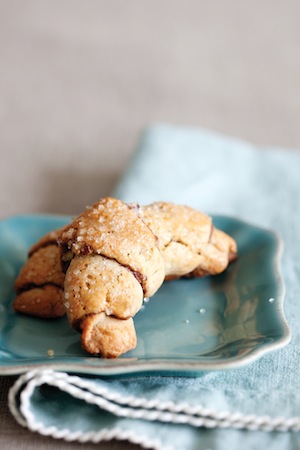
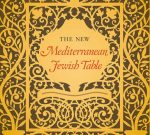
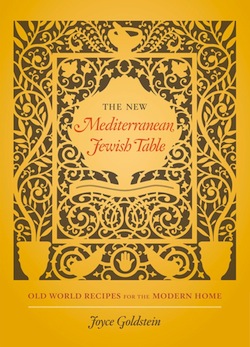 After an explanation about kosher laws and the food of Jewish holidays, there are 11 cookbook chapters covering appetizers, spreads and salads (49 recipes), savory pastries (21 recipes), eggs and fritters (24 recipes), soups (29 recipes), rice, pasta and grains (31 recipes), vegetables (48 recipes), fish (46 recipes), poultry (23 recipes), meat (49 recipes), condiments and preserves (24 recipes) and desserts (51 recipes). There are a whopping 395 recipes in all.
After an explanation about kosher laws and the food of Jewish holidays, there are 11 cookbook chapters covering appetizers, spreads and salads (49 recipes), savory pastries (21 recipes), eggs and fritters (24 recipes), soups (29 recipes), rice, pasta and grains (31 recipes), vegetables (48 recipes), fish (46 recipes), poultry (23 recipes), meat (49 recipes), condiments and preserves (24 recipes) and desserts (51 recipes). There are a whopping 395 recipes in all.